|
|
Top 10 Craziest Events Caught on Live TV
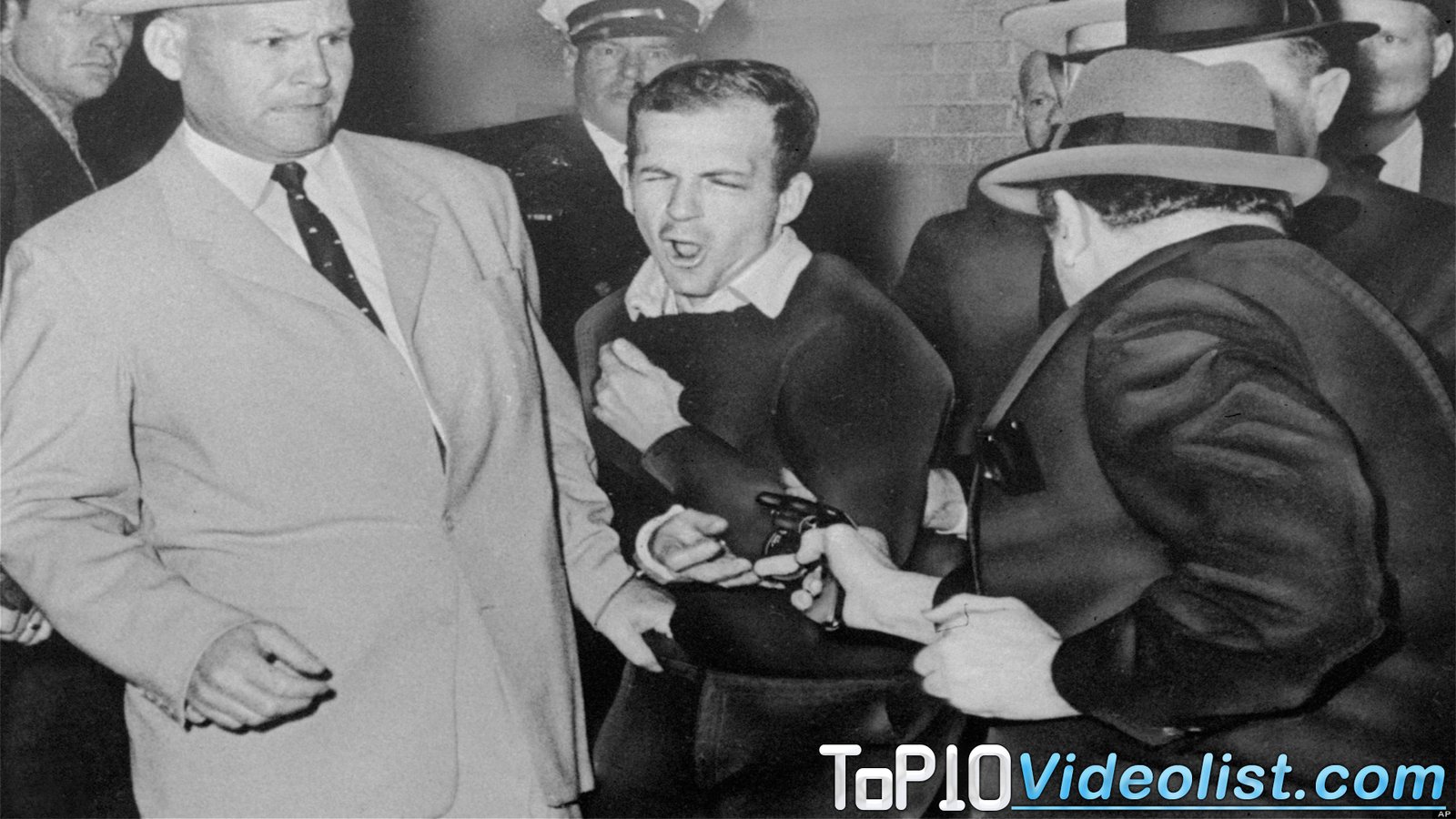
10 - Lee Harvey Oswald's Murder
Country: USA
Lee Harvey Oswald, the alleged assassin of President John F. Kennedy, was murdered on November 24, 1963, just two days after the assassination of President Kennedy. Oswald’s killer was Jack Ruby, a Dallas nightclub owner. Here are key details about the events surrounding Lee Harvey Oswald’s murder:
- Assassination of President Kennedy:
- On November 22, 1963, President John F. Kennedy was assassinated in Dallas, Texas, while riding in a motorcade.
- Lee Harvey Oswald’s Arrest:
- Shortly after the assassination, Lee Harvey Oswald was apprehended by the police at the Texas Theatre in Dallas. He was charged with the murder of Dallas police officer J.D. Tippit, who had been killed earlier that day.
- Interrogation and Charges:
- Oswald was interrogated by law enforcement and denied involvement in both the killing of Officer Tippit and the assassination of President Kennedy.
- On November 23, 1963, while being transferred from police headquarters to the county jail, Oswald was shot by Jack Ruby in the basement of the Dallas Police Department.
- Jack Ruby’s Motivation:
- Jack Ruby, whose given name was Jacob Rubenstein, was a nightclub owner with connections to the Dallas police and the criminal underworld.
- Ruby claimed that he shot Oswald out of grief and anger over Kennedy’s assassination, as well as to spare Jacqueline Kennedy, the widow, from the ordeal of a trial.
- Live Television Broadcast:
- The shooting of Oswald by Ruby was captured on live television, as news outlets were covering the transfer of Oswald from the police headquarters.
- Millions of viewers witnessed the shooting, making it one of the most infamous moments in television history.
- Oswald’s Death:
- Lee Harvey Oswald was taken to Parkland Hospital, the same hospital where President Kennedy had been pronounced dead, but he died less than two hours after being shot by Ruby.
- Investigations and Conspiracy Theories:
- The murder of Oswald by Jack Ruby raised suspicions and fueled conspiracy theories surrounding Kennedy’s assassination.
- Ruby’s connections to organized crime and his motivation for killing Oswald were subjects of scrutiny.
- Warren Commission:
- The Warren Commission, established to investigate Kennedy’s assassination, concluded that Oswald acted alone in killing Kennedy.
- Ruby was convicted of murder in 1964 but died of cancer in prison before being granted a new trial.
The events surrounding Lee Harvey Oswald’s murder by Jack Ruby have been a subject of controversy and speculation. While the Warren Commission officially concluded that Oswald acted alone in assassinating President Kennedy, conspiracy theories and alternative explanations have persisted over the years.
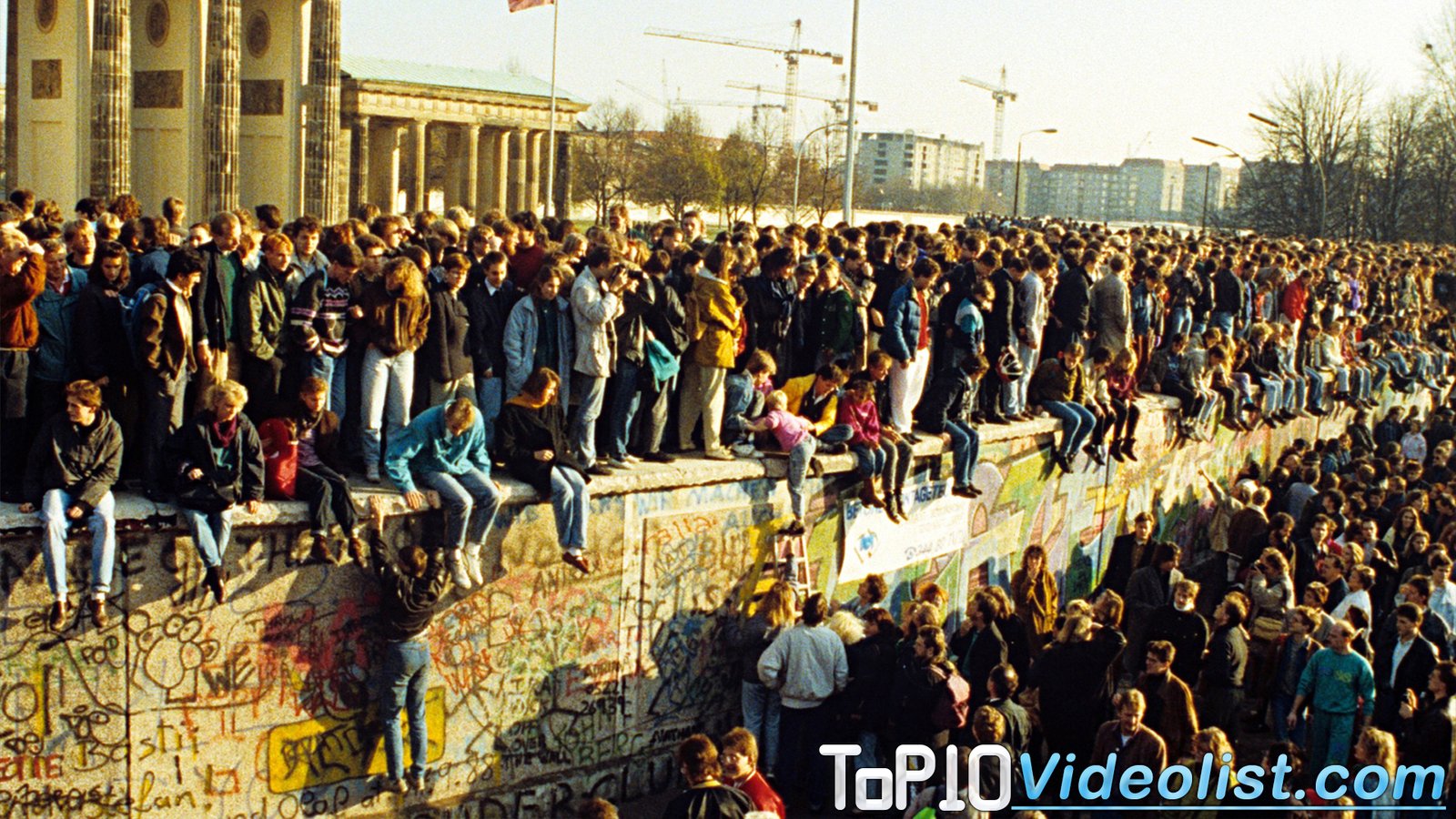
9 - The Fall of The Berlin Wall
Country: Germany
The fall of the Berlin Wall was a historic event that marked the end of the Cold War and the division of East and West Berlin. The Berlin Wall, which had been erected by the German Democratic Republic (East Germany) in 1961, was a physical and ideological barrier separating East and West Berlin. The fall of the wall symbolized the reunification of Germany and the broader political changes in Europe. Here are key details about the fall of the Berlin Wall:
- Construction of the Wall:
- The Berlin Wall was constructed by East Germany on August 13, 1961, to prevent East Berliners from fleeing to West Berlin, which was part of the Federal Republic of Germany.
- Iron Curtain and Cold War Context:
- The division of Germany and the construction of the Berlin Wall were part of the broader Cold War struggle between the United States and its Western allies and the Soviet Union and its Eastern Bloc allies.
- Political Changes in Eastern Europe:
- By the late 1980s, a wave of political changes was sweeping through Eastern Europe, leading to the weakening of Communist governments.
- The policies of Soviet leader Mikhail Gorbachev, including glasnost (openness) and perestroika (restructuring), contributed to a thaw in the Cold War.
- Protests and Open Borders:
- In the fall of 1989, a series of peaceful protests and demonstrations took place in East Germany, including in Berlin, calling for democratic reforms and the opening of the border.
- On November 9, 1989, the East German government, under pressure from the protests, announced that citizens could cross the border freely.
- The Historic Announcement:
- In a press conference, East German spokesman Günter Schabowski mistakenly announced that citizens could cross the border immediately, without restrictions.
- Thousands of East Berliners rushed to the border crossings, demanding to be let through.
- Fall of the Wall:
- The border guards, initially unaware of the announcement, eventually allowed the crowds to cross.
- The wall was breached as people climbed over and celebrated on both sides. Some even began chipping away at the wall with hammers and chisels.
- Reunification of Germany:
- The fall of the Berlin Wall symbolized the end of the division between East and West Germany.
- On October 3, 1990, Germany was officially reunified, and the country became one sovereign nation again.
- Symbolism and Legacy:
- The fall of the Berlin Wall is considered a symbol of the end of the Cold War and the ideological divisions in Europe.
- The event had a profound impact on the political landscape, leading to the reunification of Germany and the eventual dissolution of the Soviet Union.
The fall of the Berlin Wall is celebrated as a historic moment of unity and freedom, and it played a crucial role in the broader geopolitical transformations that led to the end of the Cold War in Europe.

8 - The World Series Earthquake
Country: USA
The “World Series Earthquake” refers to the seismic event that occurred during Game 3 of the 1989 World Series between the San Francisco Giants and the Oakland Athletics. This earthquake is more widely known as the Loma Prieta earthquake due to its epicenter in the Loma Prieta region of the Santa Cruz Mountains in Northern California. The earthquake struck on October 17, 1989, at 5:04 p.m. local time.
Here are key details about the World Series Earthquake:
- Magnitude and Epicenter:
- The Loma Prieta earthquake had a magnitude of 6.9.
- The epicenter was located near Loma Prieta in the Santa Cruz Mountains, approximately 60 miles south of San Francisco.
- Timing During the World Series:
- The earthquake occurred just before the scheduled start of Game 3 of the 1989 World Series at Candlestick Park in San Francisco.
- The San Francisco Giants were playing against the Oakland Athletics.
- Impact on the Game:
- The earthquake struck just as the teams were about to begin the warm-up for the game.
- The shaking was felt strongly at Candlestick Park, and the stadium sustained some damage, including a section of the upper deck falling.
- Broadcast and Media:
- The game was being broadcast nationally on live television, and the earthquake was captured on camera.
- The iconic images of the earthquake, including the swaying of the stadium and the collapse of a section of the Bay Bridge, became widely circulated.
- Casualties and Damage:
- The earthquake resulted in 63 deaths and caused widespread damage, particularly in the San Francisco Bay Area.
- In addition to the collapsed section of the Bay Bridge, numerous buildings and structures were damaged, including homes, roadways, and infrastructure.
- Impact Beyond the Game:
- The earthquake had a profound impact on the Bay Area and led to a reevaluation of seismic safety measures.
- The collapse of the Cypress Street Viaduct in Oakland raised concerns about the vulnerability of certain types of infrastructure during earthquakes.
- Rescheduling the World Series:
- The World Series was postponed for 10 days following the earthquake.
- When the series resumed, the Oakland Athletics went on to win, sweeping the Giants in four games.
The Loma Prieta earthquake during the 1989 World Series is remembered not only for its impact on the game but also for the broader consequences it had on the region’s infrastructure and awareness of seismic risks in California.
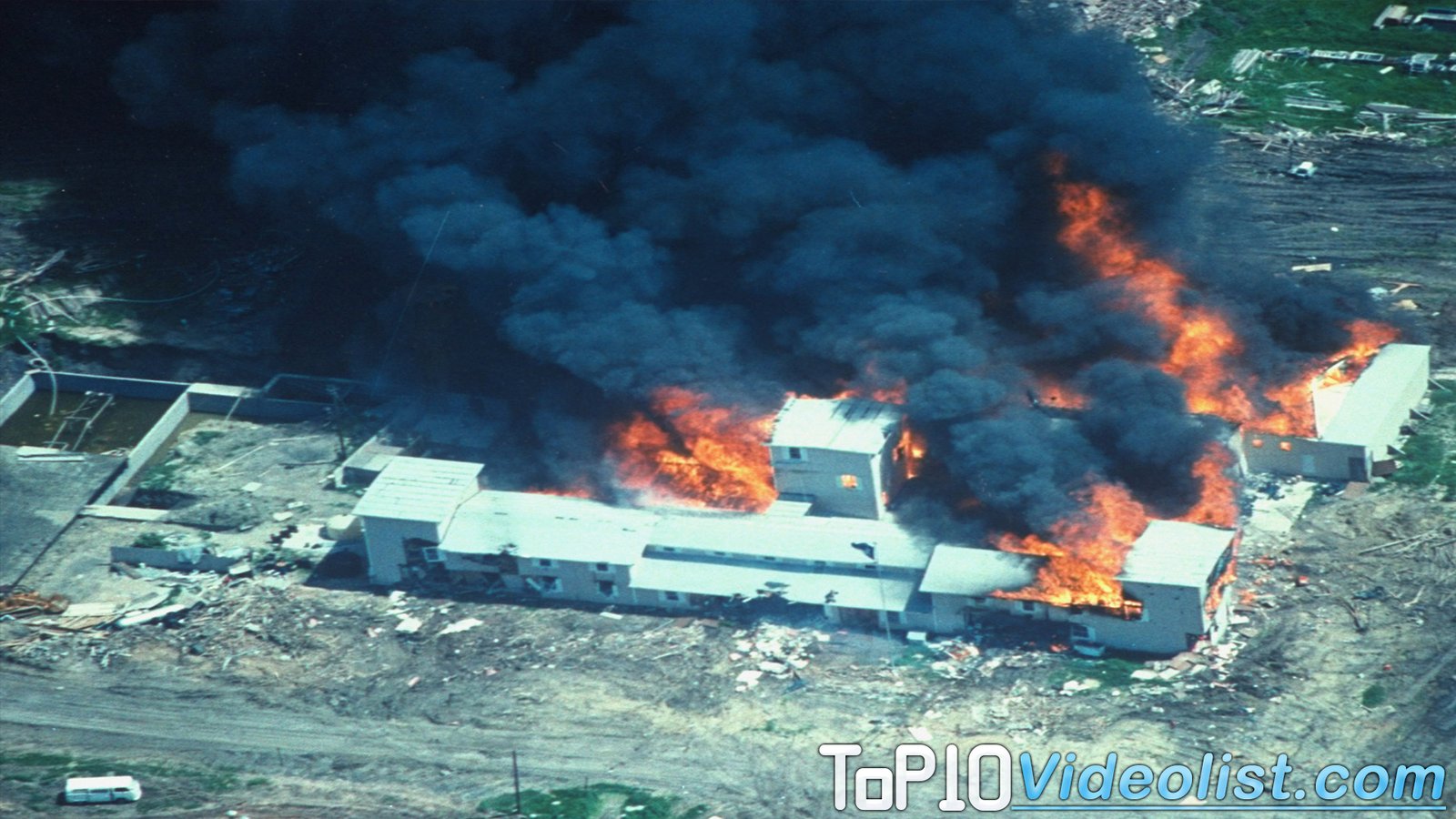
7 - The Waco Siege
Country: USA
The Waco Siege, also known as the Waco Massacre, was a siege of a compound belonging to the religious group Branch Davidians near Waco, Texas, that took place from February 28 to April 19, 1993. The confrontation between the Branch Davidians and law enforcement agencies, particularly the Bureau of Alcohol, Tobacco, and Firearms (ATF) and the Federal Bureau of Investigation (FBI), ended tragically with a fire that consumed the compound. Here are key details about the Waco Siege:
- Branch Davidians:
- The Branch Davidians were a religious sect that originated from a schism within the Davidian movement, itself an offshoot of the Seventh-day Adventist Church.
- The group, led by David Koresh (born Vernon Wayne Howell), lived in a compound known as Mount Carmel Center, located just outside of Waco.
- Initial Raid:
- On February 28, 1993, the ATF attempted to execute a search warrant at the Mount Carmel Center based on allegations of weapons violations, child abuse, and other criminal activities.
- The raid turned into a gun battle, resulting in the deaths of four ATF agents and six Branch Davidians.
- 51-Day Siege:
- Following the failed raid, a standoff ensued between the FBI and the Branch Davidians. The FBI established a perimeter around the compound, and negotiations began to try to resolve the situation peacefully.
- Negotiations and Escalation:
- Negotiations between the FBI and David Koresh were marked by difficulties and breakdowns.
- The FBI increased pressure on the Branch Davidians by playing loud music and using bright lights to disrupt their sleep.
- Fire and Tragedy:
- On April 19, 1993, the FBI initiated a final assault on the compound using tear gas. A few hours later, a fire broke out within the compound.
- The fire quickly engulfed the entire compound, resulting in the deaths of 76 people, including David Koresh.
- Controversies and Investigations:
- The cause of the fire remains a subject of controversy. The official investigation concluded that it was started by the Branch Davidians, possibly as a form of mass suicide or as a response to the FBI’s actions.
- Critics argue that the FBI’s tactics, including the use of tear gas, may have contributed to the fire.
- Impact and Aftermath:
- The Waco Siege had a significant impact on public perception and raised questions about the appropriate use of force by law enforcement agencies.
- The incident led to increased scrutiny of government actions, especially in confrontations with unconventional religious groups.
The Waco Siege remains a highly debated and controversial event in American history, touching on issues of religious freedom, government intervention, and the use of force in law enforcement. The incident also influenced discussions about the balance between individual rights and public safety.
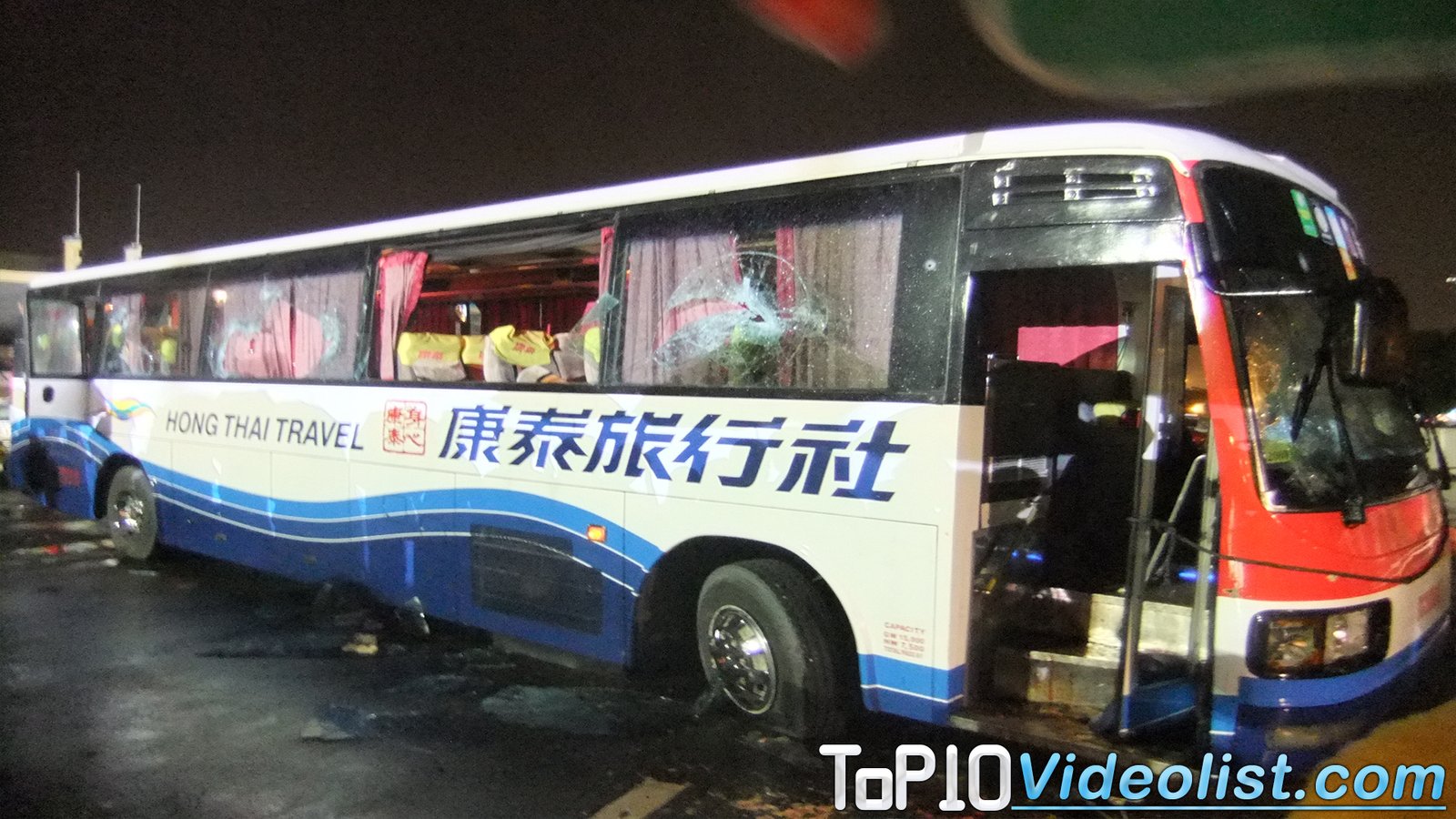
6 - Manila Hostage Crisis
Country: Philippines
The Manila hostage crisis occurred on August 23, 2010, when a former Philippine National Police officer named Rolando Mendoza hijacked a tourist bus in Manila, Philippines. The incident ended in tragedy, resulting in the deaths of several Hong Kong tourists and injuries to others. Here are key details about the Manila hostage crisis:
- Hijacking:
- Rolando Mendoza, a dismissed senior inspector of the Manila Police, hijacked a tourist bus carrying 25 people, mostly Hong Kong nationals, in an attempt to air his grievances over his dismissal from the police force.
- Background of the Hijacker:
- Mendoza was dismissed from the police force over allegations of robbery, extortion, and drug-related charges. He claimed that the charges were fabricated and sought reinstatement.
- Bus Siege:
- The bus was taken hostage near Rizal Park in Manila. Mendoza demanded his reinstatement and a fair hearing of his case.
- Police Response:
- The police attempted negotiations with Mendoza, but communication difficulties and the lack of a skilled negotiator hindered progress.
- After several hours, the police decided to take action to rescue the hostages.
- Rescue Attempt:
- The police attempted to storm the bus, but the operation was poorly executed, leading to a shootout between Mendoza and the police.
- Casualties:
- The rescue attempt resulted in the deaths of eight hostages. Seven others were injured.
- Perpetrator’s Death:
- Mendoza was killed during the rescue operation, further intensifying the controversy surrounding the handling of the crisis.
- Aftermath:
- The incident strained diplomatic relations between the Philippines and Hong Kong.
- The handling of the hostage crisis was widely criticized, both domestically and internationally, leading to calls for reforms in law enforcement and crisis management.
- Impact on Tourism:
- The Manila hostage crisis had a negative impact on tourism in the Philippines, particularly from Hong Kong and other parts of Asia.
- Investigations and Reforms:
- Several investigations were conducted to determine the causes of the crisis and the shortcomings in the police response.
- The incident prompted the Philippine government to review and improve its crisis management and law enforcement procedures.
The Manila hostage crisis remains a tragic and controversial event, highlighting the importance of effective crisis management and law enforcement protocols in handling such situations. The incident had repercussions on diplomatic relations and tourism, and it prompted calls for reforms in the Philippines’ approach to hostage situations and public safety.
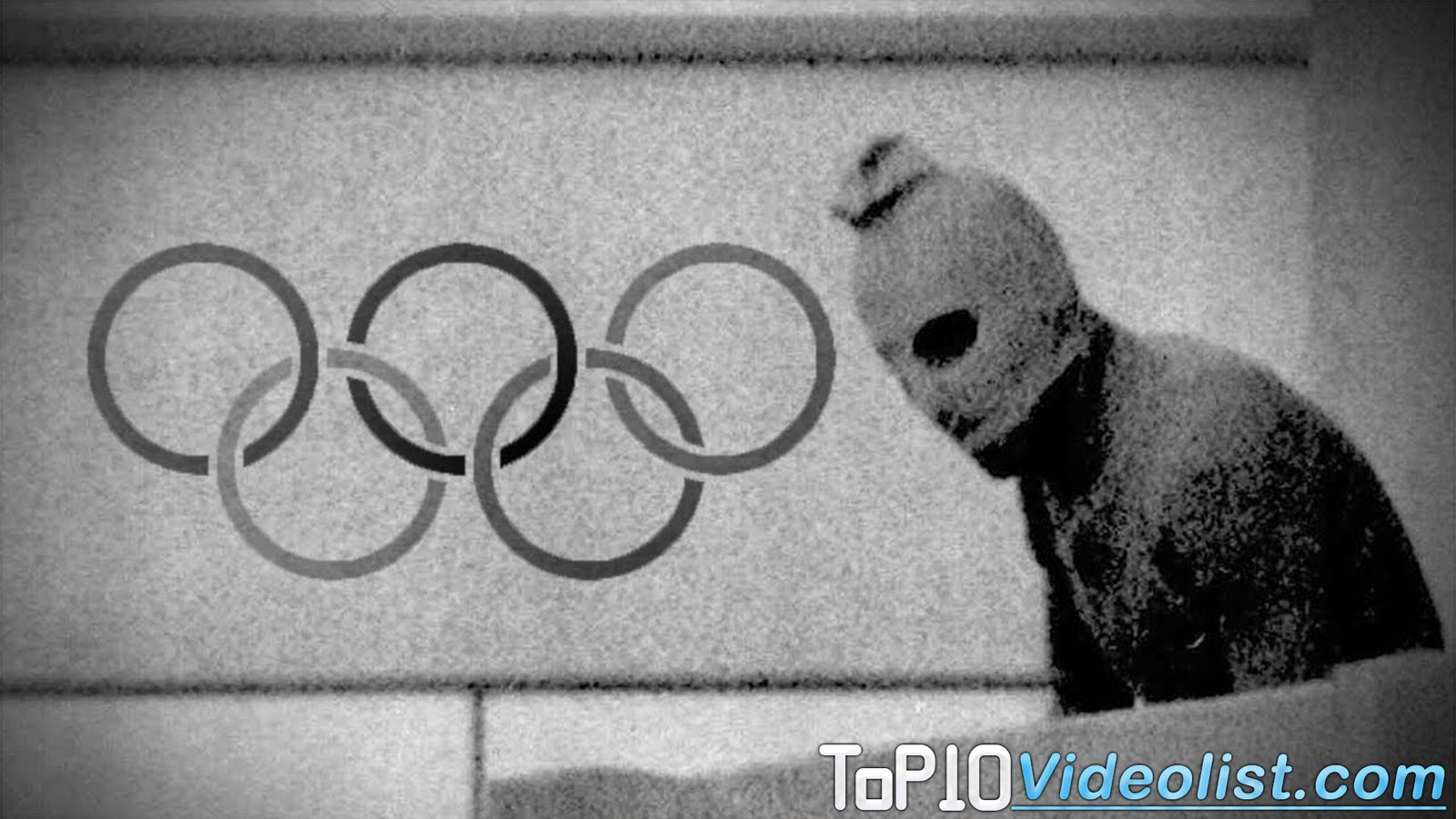
5 - Munich Massacre
Country: Germany
The Munich Massacre refers to the tragic events that occurred during the 1972 Summer Olympics in Munich, West Germany. The incident involved the kidnapping and subsequent killing of 11 members of the Israeli Olympic team by a Palestinian terrorist group. Here are key details about the Munich Massacre:
- Background:
- The Summer Olympics in Munich were intended to showcase a peaceful and celebratory gathering of athletes from around the world.
- Attack and Kidnapping:
- On September 5, 1972, eight members of the Palestinian terrorist group Black September infiltrated the Olympic Village.
- The terrorists targeted the Israeli team, entering their quarters and taking nine hostages: wrestling coach Moshe Weinberg, weightlifting coach Yossef Romano, and athletes David Berger, Ze’ev Friedman, Yossef Gutfreund, Eliezer Halfin, Yehuda Weisenstein, Mark Slavin, and Amitzur Shapira.
- Standoff:
- The terrorists demanded the release of 234 Palestinians held in Israeli prisons, along with two German radicals detained in Germany.
- Failed Rescue Attempt:
- A botched rescue attempt at Fürstenfeldbruck Air Base on September 6, where the hostages were held, led to a firefight between the terrorists and German police.
- During the shootout, all nine hostages were killed.
- Casualties:
- In addition to the Israeli hostages, one German police officer was killed during the failed rescue attempt.
- Five terrorists were killed during the firefight, and three were captured.
- Impact:
- The Munich Massacre had a profound impact on the Olympic Games and the perception of security at international events.
- The attack highlighted the vulnerability of major sporting events to terrorist threats.
- Aftermath:
- Israel responded by launching Operation Wrath of God, a series of covert operations targeting those believed to be involved in the Munich Massacre.
- Security measures at subsequent Olympic Games were significantly increased.
- Memorials:
- Memorials, including the Place of Remembrance at the Munich Olympic Park, have been established to honor the memory of the victims.
The Munich Massacre remains a tragic chapter in Olympic history, marking a shift in the perception of the Games as a symbol of international cooperation and friendship. The attack had a lasting impact on security protocols for major events and heightened awareness of the potential threat of terrorism at global gatherings.
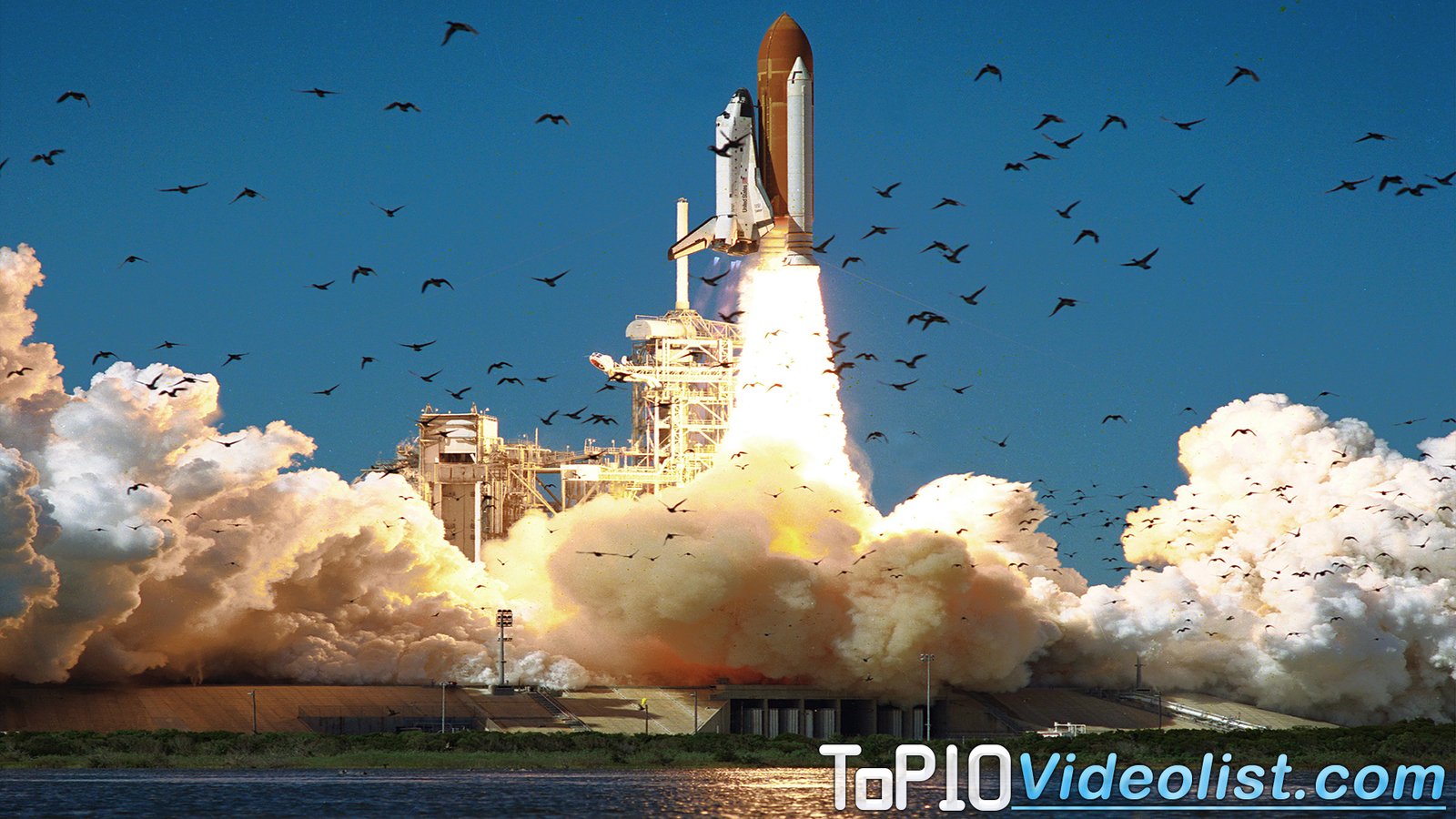
4 - Space Shuttle Challenger Disaster
Country: USA
The Space Shuttle Challenger disaster was a tragic event in the history of space exploration that occurred on January 28, 1986. The Challenger shuttle, part of NASA’s Space Shuttle program, broke apart just 73 seconds into its flight, leading to the deaths of all seven crew members on board. Here are key details about the Challenger disaster:
- Launch and Crew:
- The Challenger mission, designated STS-51-L, was set to be the 25th flight of the Space Shuttle program.
- The crew consisted of seven members: Francis R. Scobee (Commander), Michael J. Smith (Pilot), Ronald McNair (Mission Specialist), Ellison S. Onizuka (Mission Specialist), Judith A. Resnik (Mission Specialist), Gregory Jarvis (Payload Specialist), and Christa McAuliffe (Payload Specialist and the first private citizen selected to fly in space).
- Launch Decision:
- The Challenger was launched from Kennedy Space Center in Florida on the morning of January 28, 1986.
- The launch faced delays and concerns due to unusually cold temperatures on the morning of the launch.
- O-Ring Failure:
- The primary cause of the disaster was the failure of an O-ring seal in one of the shuttle’s solid rocket boosters.
- The O-rings lost flexibility in the cold temperatures, leading to the breach and ultimately the destruction of the external fuel tank.
- Explosion:
- Approximately 73 seconds after liftoff, the Challenger’s external fuel tank exploded, leading to the destruction of the orbiter.
- The explosion occurred at an altitude of about 48,000 feet, and debris fell into the Atlantic Ocean.
- Impact on the Nation:
- The Challenger disaster had a profound impact on the United States and the world, as the mission included Christa McAuliffe, who was set to be the first private citizen and teacher in space.
- The event was witnessed by millions of viewers, as it was being broadcast live on television.
- Investigation and Changes:
- Following the disaster, an investigation, known as the Rogers Commission, was conducted to determine the cause.
- The investigation revealed flaws in the decision-making process and communication within NASA, leading to a redesign of the shuttle’s boosters and changes in management and organizational culture.
- Legacy:
- The Challenger disaster remains a pivotal moment in space exploration history, prompting a reevaluation of safety protocols and decision-making processes in space missions.
- The tragic loss of the Challenger crew is remembered as a solemn reminder of the risks inherent in space exploration.
The Challenger disaster had a profound and lasting impact on NASA and the space program, leading to improvements in safety measures and a renewed commitment to learning from failures in order to advance space exploration.
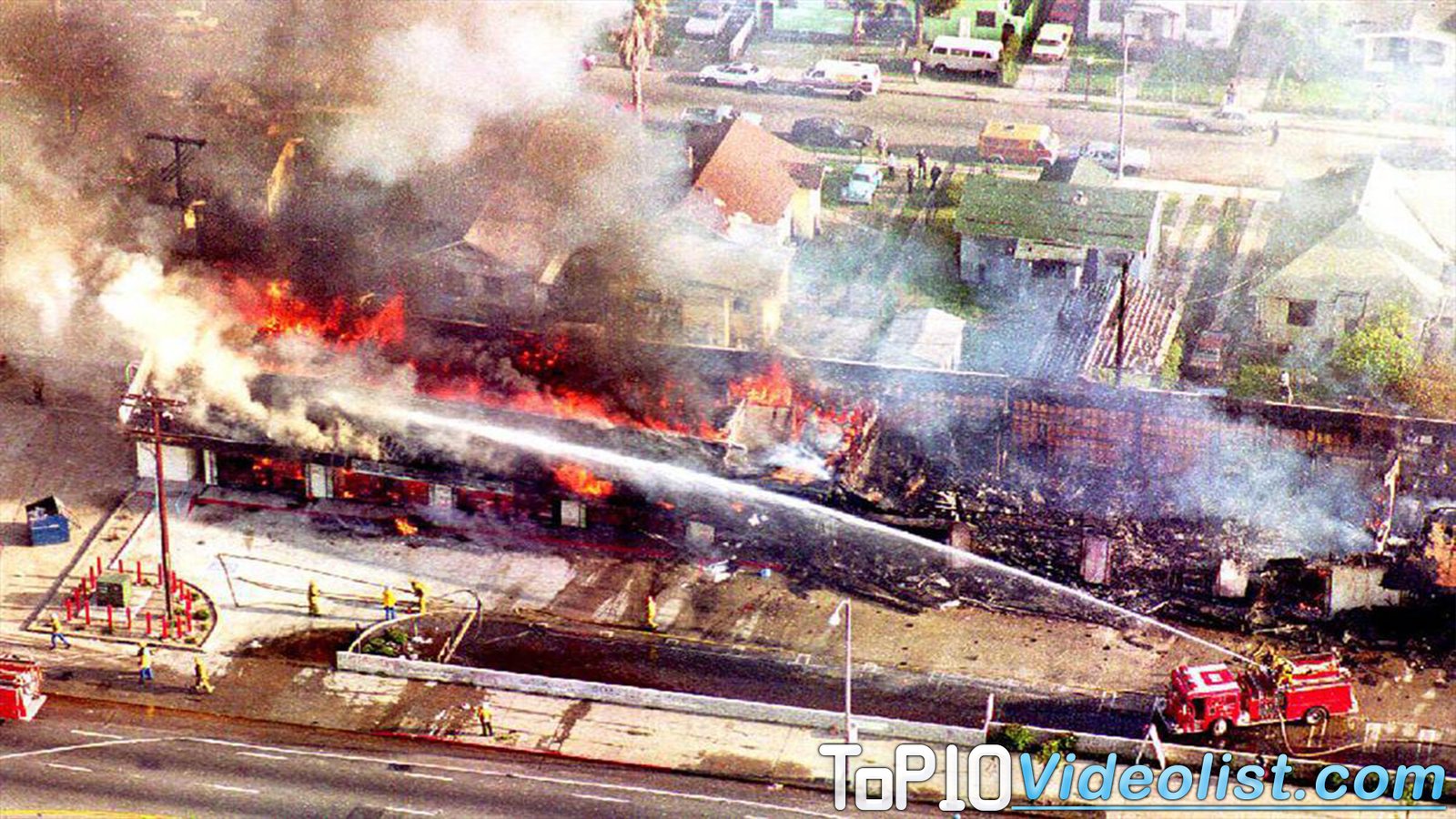
3 - Los Angeles Riots
Country: USA
The Los Angeles Riots, also known as the Rodney King Riots, occurred in Los Angeles, California, in late April and early May 1992. The unrest was triggered by the acquittal of four Los Angeles Police Department (LAPD) officers in the beating of Rodney King, an African American man, and it highlighted longstanding racial tensions and social issues. Here are key details about the Los Angeles Riots:
- Rodney King Incident:
- On March 3, 1991, Rodney King was brutally beaten by four LAPD officers following a high-speed car chase. The incident was captured on video by a bystander and widely broadcast, sparking outrage.
- Trial and Acquittal:
- The officers involved in the beating—Stacey Koon, Laurence Powell, Timothy Wind, and Theodore Briseno—were charged with use of excessive force.
- On April 29, 1992, the jury acquitted three of the officers and could not reach a verdict on the fourth, leading to widespread public anger.
- Outbreak of Violence:
- The acquittal served as a catalyst for long-simmering tensions related to racial injustice, economic disparities, and police brutality.
- Protests and demonstrations turned violent, leading to widespread looting, arson, and clashes with law enforcement.
- Extent of Unrest:
- The riots spread across Los Angeles and lasted for six days, resulting in significant damage to businesses, homes, and public infrastructure.
- The violence and chaos resulted in numerous injuries, deaths, and thousands of arrests.
- Response:
- The California National Guard was called in to help restore order, and a curfew was imposed in affected areas.
- Law enforcement agencies faced criticism for their handling of the situation, with some accused of being slow to respond.
- Civil Unrest’s Toll:
- The final toll of the unrest included over 60 deaths, thousands of injuries, and property damage estimated at over $1 billion.
- Korean-American businesses were disproportionately affected, leading to strained relations between communities.
- Long-Term Impact:
- The Los Angeles Riots prompted discussions about systemic issues related to race, poverty, and policing.
- The incident and its aftermath led to reforms within the LAPD and increased scrutiny of police practices nationwide.
The Los Angeles Riots of 1992 remain a significant chapter in American history, underscoring the complex and interconnected issues of racial injustice, economic inequality, and police-community relations. The event had a lasting impact on public discourse and efforts toward addressing systemic problems within the criminal justice system.
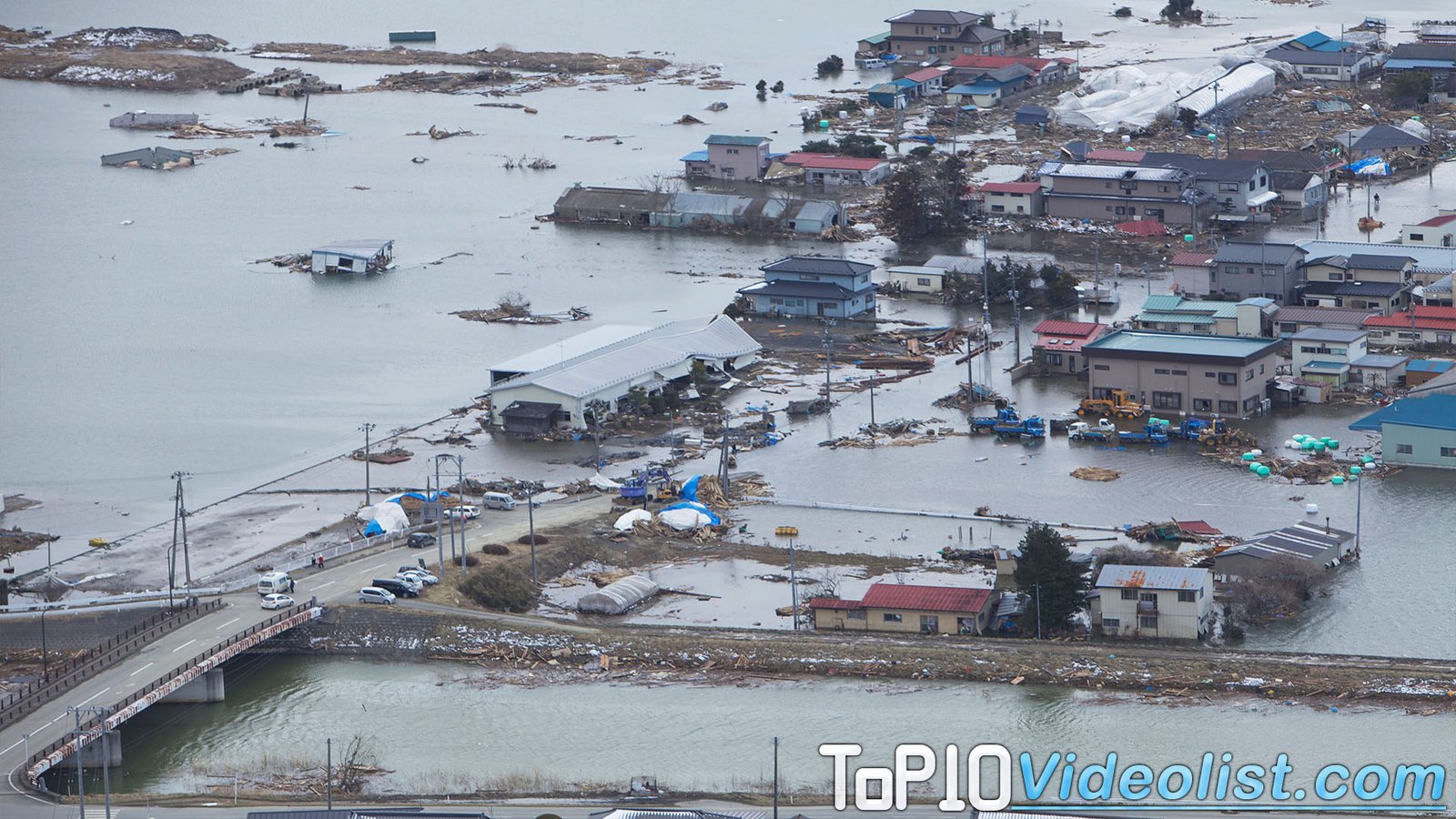
2 - Tohoku Earthquake and Tsunami
Country: Japan
The Tohoku Earthquake and Tsunami, also known as the Great East Japan Earthquake, was a catastrophic natural disaster that struck Japan on March 11, 2011. This event had significant and far-reaching consequences, both in terms of immediate devastation and long-term effects. Here are key points about the Tohoku Earthquake and Tsunami:
- Magnitude and Epicenter: The earthquake, with a magnitude of 9.0–9.1, occurred off the northeastern coast of Japan’s Honshu Island. The epicenter was near the city of Sendai in the Tohoku region.
- Tsunami: The powerful undersea earthquake triggered a massive tsunami that swept across the Pacific Ocean. Waves reached coastal areas of Japan, causing widespread destruction. The tsunami’s height reached as high as 40 meters (131 feet) in some places.
- Devastation: The tsunami caused extensive damage to coastal towns and cities, destroying buildings, homes, infrastructure, and agricultural land. Entire communities were swept away, and the impact led to fires, meltdowns at the Fukushima Daiichi Nuclear Power Plant, and other critical emergencies.
- Casualties: The combined effects of the earthquake and tsunami resulted in a significant loss of life. Thousands of people were killed, and many more were reported missing. The event had a profound human toll and left countless individuals displaced.
- Fukushima Daiichi Nuclear Disaster: The tsunami caused a severe nuclear disaster at the Fukushima Daiichi Nuclear Power Plant. Multiple meltdowns and releases of radioactive materials occurred, leading to widespread evacuations and long-term environmental concerns.
- International Response: The international community rallied to provide humanitarian aid and assistance to Japan. Rescue and relief efforts involved various countries and organizations.
- Recovery and Rebuilding: Japan initiated extensive recovery and rebuilding efforts in the aftermath of the disaster. Reconstruction projects aimed to restore infrastructure, homes, and communities. However, the process was complex and faced challenges, particularly in the areas affected by the nuclear disaster.
- Lessons Learned: The Tohoku Earthquake and Tsunami prompted a reassessment of earthquake and tsunami preparedness worldwide. It also sparked discussions on nuclear safety and disaster response strategies.
The Tohoku Earthquake and Tsunami remains one of the most powerful and devastating natural disasters in recent history. Its impact highlighted the importance of disaster preparedness, international cooperation, and ongoing efforts to address the long-term consequences of such catastrophic events.
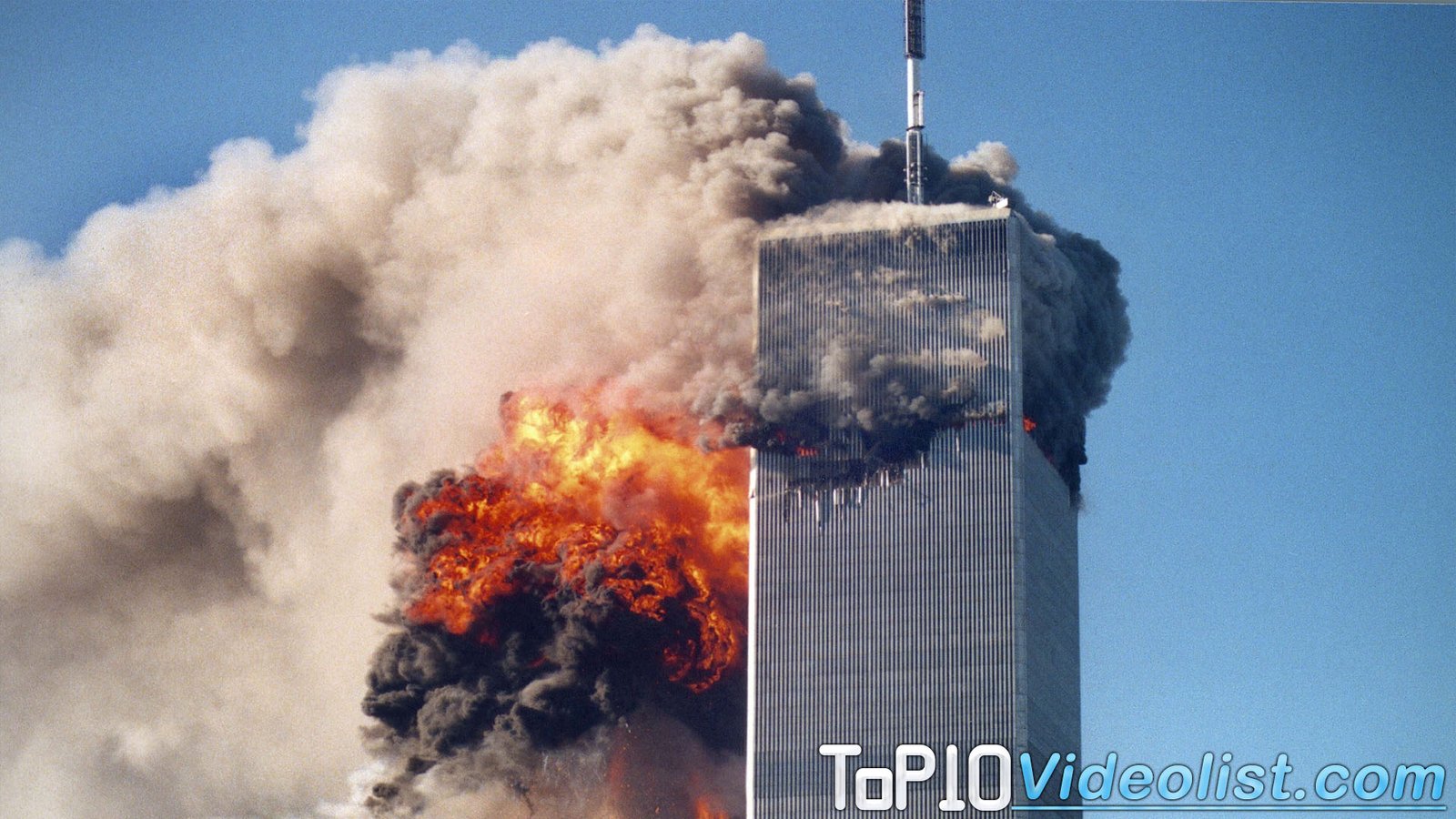
1 - September 11
Country: USA
The phrase “September 11” typically refers to the terrorist attacks that occurred on September 11, 2001, in the United States. On that day, members of the extremist group al-Qaeda hijacked four commercial airplanes, targeting prominent buildings in a coordinated attack. The events of September 11, often referred to as 9/11, had profound and lasting effects on global politics, security measures, and public consciousness.
Key points about the September 11 attacks:
- Targets: The hijackers crashed two planes into the Twin Towers of the World Trade Center in New York City and another into the Pentagon in Arlington, Virginia. The fourth plane, United Airlines Flight 93, crashed into a field in Pennsylvania after passengers bravely attempted to regain control from the hijackers.
- Casualties: The attacks resulted in the deaths of nearly 3,000 people and caused significant injuries. The majority of the casualties were civilians, including passengers on the planes, first responders, and individuals within the targeted buildings.
- Impact: The attacks had far-reaching consequences, leading the United States and its allies to initiate the War on Terror. It resulted in increased security measures, changes in international relations, and a reevaluation of counterterrorism strategies.
- War on Terror: The U.S. led an international coalition in military operations, including the invasion of Afghanistan in 2001 to dismantle the Taliban regime, which had harbored al-Qaeda operatives.
- Homeland Security: In response to the attacks, the U.S. government implemented significant changes to domestic security policies, including the creation of the Department of Homeland Security.
- Memorials: Various memorials and commemorative events have been established to honor the victims of 9/11. The National September 11 Memorial & Museum in New York City stands at the World Trade Center site.
The events of September 11, 2001, remain a pivotal moment in contemporary history, shaping geopolitical landscapes and influencing global perspectives on security, terrorism, and resilience. The impact of these attacks continues to be felt across various aspects of society, politics, and international relations.




































